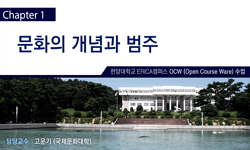This article deals with annual customs in urban settings in contemporary Korean society. For instance, some traditional annual customs are still actively practiced in daily urban life in Korean society today. In particular, the Korean twenty-four divi...
http://chineseinput.net/에서 pinyin(병음)방식으로 중국어를 변환할 수 있습니다.
변환된 중국어를 복사하여 사용하시면 됩니다.
- 中文 을 입력하시려면 zhongwen을 입력하시고 space를누르시면됩니다.
- 北京 을 입력하시려면 beijing을 입력하시고 space를 누르시면 됩니다.
현대 도시 공간 속 세시(歲時)의 전승과 변이양상 = Transmissions and Variations of Annual Customs in Contemporary Urban Spheres
한글로보기https://www.riss.kr/link?id=A105111186
- 저자
- 발행기관
- 학술지명
- 권호사항
-
발행연도
2017
-
작성언어
-
- 주제어
-
KDC
100
-
자료형태
학술저널
- 발행기관 URL
-
수록면
405-431(27쪽)
- 제공처
-
0
상세조회 -
0
다운로드
부가정보
다국어 초록 (Multilingual Abstract)
Relatively new annual events are also regularly and repeatedly practiced today. Those newly celebrated annual events are classified into three categories: national holidays, government approved commemoration days, commercial oriented event days. All three categories are interesting to be analysed in comparison to traditional annual customs. Yet some commercial embedded event days, such as Valentine’s day, White day, Pepero’s day, etc, are gaining popularity among younger generations in contemporary urban Korea.
Urbanization and industrialization are distinctive cultural and social substances in contemporary urban Korea. Hence annual customs are also inevitably affected by these influences. As a result, on the one hand some of the traditional annual customs changed slightly for both effectiveness and convenience, others are weakened or even disappeared. Furthermore, some new forms of contemporary annual events contain traditional substances of traditional annual customs. However, it is noticeable that traditional annual customs normally reinforce vertical connections whereas today’s annual events solidate horizontal links.
This article deals with annual customs in urban settings in contemporary Korean society. For instance, some traditional annual customs are still actively practiced in daily urban life in Korean society today. In particular, the Korean twenty-four divisions of a year (so called 24 Jolgi) are widely used by mass media to clarify seasonal changes. Also to some extents those 24 Jolgi time divisions have been transmitted by proverbs and folk-belief terms which are closely related to agriculture.
Relatively new annual events are also regularly and repeatedly practiced today. Those newly celebrated annual events are classified into three categories: national holidays, government approved commemoration days, commercial oriented event days. All three categories are interesting to be analysed in comparison to traditional annual customs. Yet some commercial embedded event days, such as Valentine’s day, White day, Pepero’s day, etc, are gaining popularity among younger generations in contemporary urban Korea.
Urbanization and industrialization are distinctive cultural and social substances in contemporary urban Korea. Hence annual customs are also inevitably affected by these influences. As a result, on the one hand some of the traditional annual customs changed slightly for both effectiveness and convenience, others are weakened or even disappeared. Furthermore, some new forms of contemporary annual events contain traditional substances of traditional annual customs. However, it is noticeable that traditional annual customs normally reinforce vertical connections whereas today’s annual events solidate horizontal links.
동일학술지(권/호) 다른 논문
-
- 한국사상문화학회
- 이정화
- 2017
-
- 한국사상문화학회
- 이상익
- 2017
-
- 한국사상문화학회
- 김명주
- 2017
-
- 한국사상문화학회
- 박근수
- 2017




 KCI
KCI KISS
KISS






